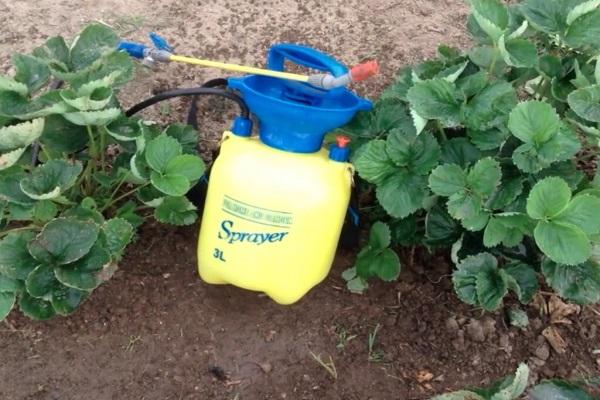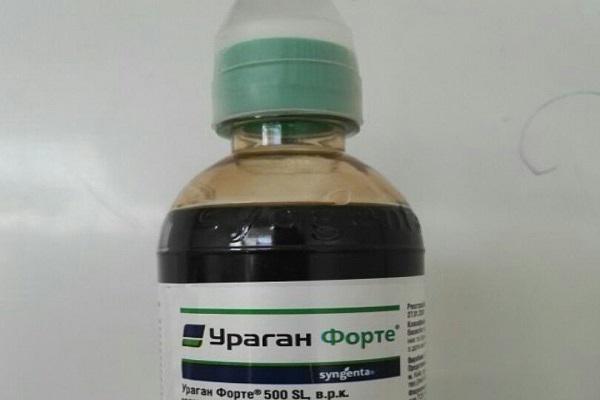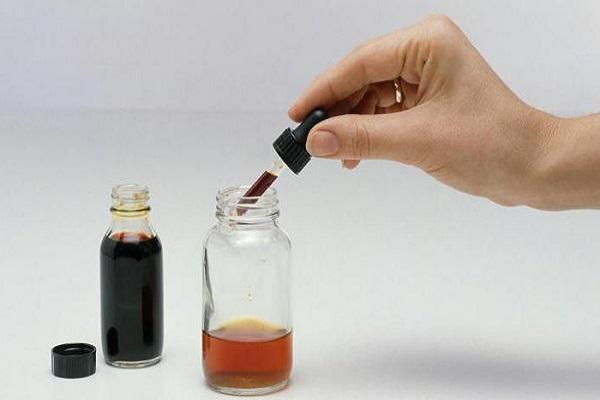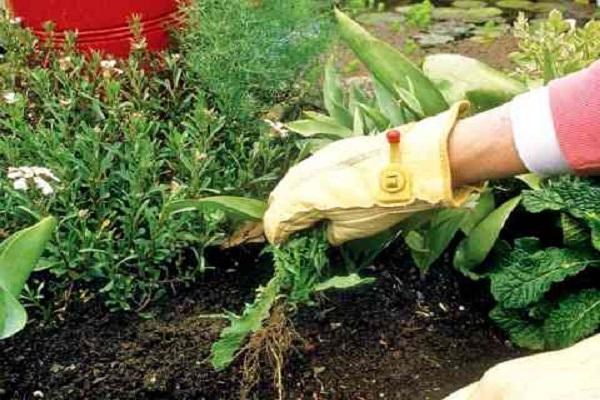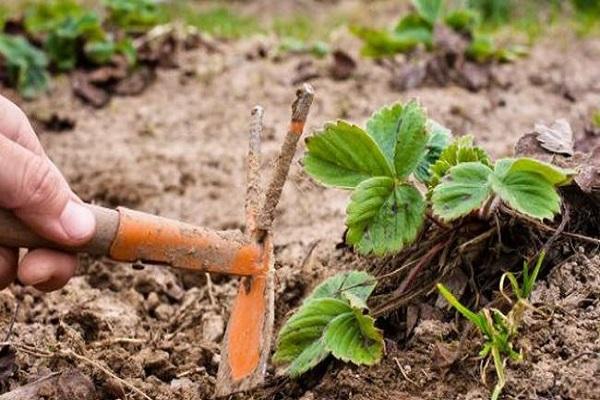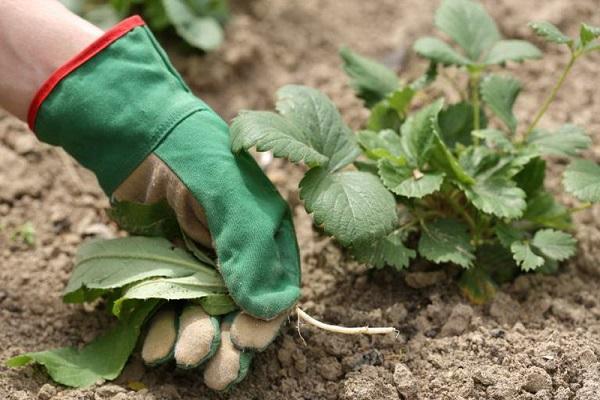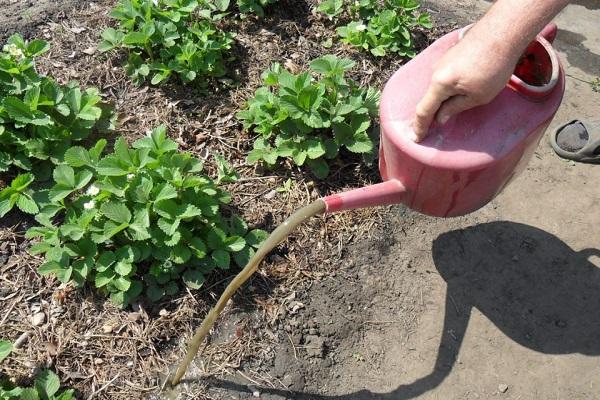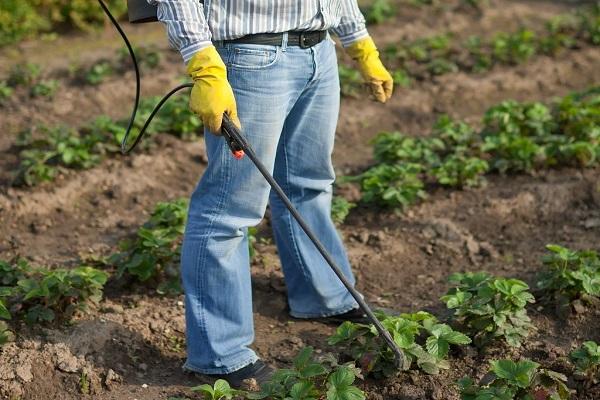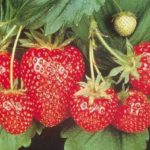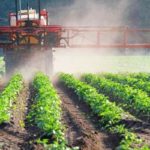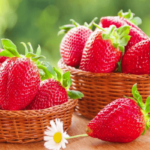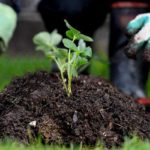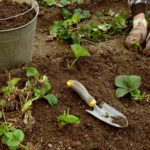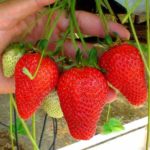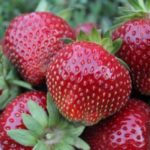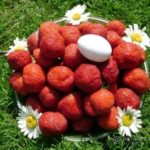Strawberries are a vitamin-rich berry that ripens in early summer. Its plantings are available in every garden plot, since it is not difficult to grow this crop. Weeds reduce the yield, reduce the quality of the berries and disrupt the aesthetics of the beds, so treating strawberries against weeds is an important technological operation. In modern conditions, with high requirements for the safety of agrochemicals, a herbicide for weed control in strawberries becomes an indispensable assistant.
- Is it possible to protect strawberries from weeds?
- How to process strawberries?
- Chemicals against weeds
- Folk remedies
- How to properly perform chemical weeding?
- Periods for treating beds from weeds
- How to apply herbicides?
- How to avoid overdose?
- How to achieve maximum effectiveness of herbicides?
- Planting strawberries after treating the soil with herbicides
Is it possible to protect strawberries from weeds?
A well-thought-out system for growing berry crops, combining mechanical methods of weed control and moderate use of agrochemicals, allows you to reliably get rid of weeds, both in beds and between rows, and on paths. Mechanical removal of unnecessary vegetation is of paramount importance when establishing a plantation, severely clogging the beds with plants with a deeply penetrating tap root system, for example, acorn grass, quinoa, and ragweed.
Important! Before planting strawberries, it is necessary to carefully free the area from the roots, apply organic fertilizers, deeply loosen the soil and water it to stimulate the growth of weeds.
The protective effect of using the products in early spring lasts 3-7 weeks. During this period, the formation, ripening, and sometimes harvesting occurs. At this time, it is important not to disturb the root system of the bushes. In addition, weeds from the cabbage family, goosefoot and many others can become breeding grounds for diseases and pests of strawberries, for example, rot and strawberry mites.
How to process strawberries?
The range of funds is quite wide. The drugs available for sale in specialized stores, when used correctly, do not accumulate in products, biomass and soil. Weeds are gradually replaced by less harmful ones, which are easier to remove manually.
Chemicals against weeds
The most complete list of herbicides used on strawberry plantations is represented by the following preparations:
- Roundup;
- Tornado;
- Alaz;
- Default;
- Dominator;
- Fosate;
- Fighter;
- Rap;
- Cosmic;
- Torch;
- Agrokiller;
- Chistogryad;
- Hurricane Forte;
- Lontrel;
- Longan;
- Premier;
- Corrector;
- Lorgnette;
- Bis-300;
- Agron;
- Clippard;
- Choice 300;
- Gazontrel;
- Alpha Pyralid.
These drugs inhibit the growth of most dicotyledonous and monocotyledonous weeds. In this case, both the above-ground and underground parts die.
Note! Herbicides do not kill the embryos in the seeds, so unwanted plants reappear in the treatment areas after some time, sprouting from the seeds.
Folk remedies
Opponents of the use of agrochemicals in personal garden plots are recommended to use folk remedies to suppress the growth of unnecessary vegetation on strawberry plantations. Such means include:
- infusion of celandine;
- infusion of walnut leaves;
- iodine solution;
- potassium permanganate solution;
- bleach solution;
- baking soda solution;
- hydrogen peroxide.
Highly concentrated solutions of substances or herbal infusions are sprayed from a spray bottle onto weeds, preferably not reaching a height of 10-12 centimeters. In this case, the young seedlings will be burned and their growth will be seriously slowed down. On acidic soils, lime mortar can be used.
How to properly perform chemical weeding?
Ingredients for proper use herbicides for strawberries include:
- The choice of product is appropriate to the predominant weed species.
- Compliance with the timing of drug use.
- Prevention of exceeding application standards.
- When using in summer, cover strawberries with film.
- Compliance with personal safety measures using personal protective equipment.
Important! Strawberries cannot be treated with herbicides during the periods of budding, flowering, ovary, ripening and picking!
To choose the right product for the type of blockage and its dosage, you should carefully study the instructions for each product.Experienced agronomists and specialist consultants from agrochemical manufacturing companies will also help you understand these issues.
Note! When working with herbicides, personal protective equipment should not be neglected. Work in a protective suit, gloves, respirator and special glasses.
Periods for treating beds from weeds
Treatment of plantings against weeds is carried out once per season. This application is environmentally friendly and reduces labor costs for weeding. Plants do not suffer from a lack of moisture and nutrients that are taken away by weeds. The bushes lay a lot of fruit buds for the future harvest, which increases the overall productivity of the plantation.
Treatment of vegetative weeds can be carried out in three periods:
- in early spring, with an average daily air temperature above +5 OWITH;
- after harvesting and mowing strawberry leaves;
- in early autumn (September).
Early spring treatment, in combination with the use of mulching materials in the row (straw, sawdust, pine needles, non-woven materials), allows you to reliably protect the plantation from weeds. When processing rows after harvesting in summer and early autumn, the bushes are covered with plastic film.
How to apply herbicides?
Backpack sprayers are used for herbicide treatment. To begin work, pressure is created in the chamber. The liquid must be free of suspended matter, otherwise the sprayer may become clogged. Spraying is carried out at a height of 12-15 centimeters from the surface of the treated leaves, along the rows, if the distances between the bushes allow, then in the row.
When working with folk remedies, it is possible to use a spray bottle; eyes, skin and mucous membranes should be protected with personal protective equipment.
Many gardeners are interested in whether it is possible to water the grass with herbicide solutions from a watering can. The answer is positive - yes, it is possible, the consumption of the drug will increase, but the effect will be more pronounced.
How to avoid overdose?
To prepare working solutions, you should use graduated glassware. For small volumes of the substance, use a medical syringe. Do not dilute products by eye.
How to achieve maximum effectiveness of herbicides?
Typically, several types of weeds grow in the beds at once. Since agrochemicals are used only once per season, maximum treatment efficiency should be achieved. To do this, it is permissible to prepare solutions from two drugs. Carefully study the instructions and choose for the mixture substances from different chemical groups that act specifically on those plants that cause the most harm on the site.
Another acceptable option is to use folk remedies 2-3 weeks after chemical treatment. Plants with more succulent and soft foliage, sprouting from seeds, will be easily killed without the use of serious chemicals.
Planting strawberries after treating the soil with herbicides
Planting new strawberry plantations is recommended after herbicide treatment in autumn or early spring. Provocative watering will cause some of the seeds remaining in the ground to germinate; the sprouts must be removed manually. It is optimal to plant in a bed covered with black non-woven material of the highest density. Holes are made crosswise in the material, and rosettes are planted in them.
During the growing season, make sure that the mustache grows on top of the material. Watering and fertilizing are carried out through a drip irrigation system laid under the agricultural material.
A well-thought-out system for protecting plants from overgrowth using chemicals will help increase productivity and reduce labor costs in strawberry beds.

